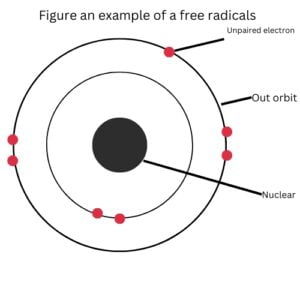The structure of an atom
Atoms are the basic units of matter and the defining structure of elements. The term “atom” comes from the Greek word for indivisible, because it was once thought that atoms were the smallest things in the universe and could not be divided. The structure of an atom is a central nucleus composed of protons and neutrons with electrons orbiting around this nucleus.
The different types of atoms
Atoms are the basic units of matter and the defining structure of elements. The term “atom” comes from the Greek word for indivisible, because it was once thought that atoms were the smallest things in the universe and could not be divided. The idea that matter is made up of indivisible atoms was first proposed by Democratic a Greek philosopher, in the 4th century bce
Atoms are extremely small; they are about one ten-billionth of a meter in diameter. Despite their small size, atoms are incredibly complex structures. They are composed of three different types of subatomic particles: protons, neutrons, and electrons.
Protons are positively charged particles that are located in the nucleus of an atom. The number of protons in an atom’s nucleus determines which element that atom is. For example, all atoms with six protons in their nucleus are carbon atoms. Neutrons are electrically neutral particles that also reside in the nucleus. Electrons are negatively charged particles that orbit the nucleus of an atom. The number of electrons orbiting an atom’s nucleus determines how chemically stable that atom is.
Atoms can exist either as independent free-standing units or as part of a larger structure such as a molecule. When atoms join together to form molecules, they share electrons in order to create a more stable electron configuration around each nucleus.
The properties of atoms
Atoms are the smallest particle of an element that has the chemical properties of that element. Atoms are made up of protons and neutrons in the nucleus, with electrons orbit ing around this nucleus.
The number of protons in an atom’s nucleus determines what element the atom is. For example, all atoms with 6 protons in their nucleus are carbon atoms. The number of neutrons in an atom can vary, however, and this gives each isotope of an element a different mass.
Electrons are responsible for most of an atom’s size and determine how the atom interacts with other atoms to form molecules. Electrons orbit the nucleus in shells. The first shell can hold up to 2 electrons, the second shell can hold up to 8 electrons, and so on.
The reactivity of atoms
Atoms are the basic units of matter and the defining structure of elements. The term “atom” comes from the Greek word for indivisible, because it was once thought that atoms were the smallest things in the universe and could not be divided. The structure of an atom is a central nucleus composed of protons and neutrons with electrons orbiting around this nucleus.
The uses of atoms in the world
Atoms have been an integral part of human life. They are used in industries, medicines and other areas.
The uses of atoms include using them to power nuclear reactors, medical research and healthcare, industry and mining operations, education, and more. They are also used in many gadgets that people use on a daily basis such as smartphones, computer screens, TV screens etc.

